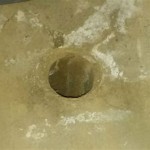How To Get Rid Of Jumping Spiders In Basement
Jumping spiders, belonging to the family Salticidae, are a common sight in many households, including basements. While they are generally harmless to humans and even beneficial as predators of other insects, their presence indoors can be unsettling for some individuals. Understanding their behavior, habitat preferences, and effective control methods is crucial for managing jumping spider populations in basements. These spiders are easily identified by their distinct jumping ability, large front eyes, and often colorful or patterned bodies. They actively hunt their prey during the day, relying on their excellent vision and agility.
Basements offer ideal conditions for jumping spiders due to several factors. They provide a dark, sheltered environment with potential food sources in the form of other insects. High humidity, common in basements, also supports the survival of these spiders. Cracks and crevices in walls, floors, and foundations offer hiding places and nesting sites. Neglecting regular cleaning and maintenance can exacerbate the problem, creating a favorable environment for jumping spiders to thrive.
Effective management of jumping spiders in basements requires a multi-faceted approach that focuses on prevention, habitat modification, and targeted control measures. This includes addressing the underlying conditions that attract them to the basement, such as moisture and food sources, as well as implementing strategies to physically remove or repel them.
Identifying and Understanding Jumping Spiders
Accurate identification is the first step in managing any pest problem. Jumping spiders are relatively easy to distinguish from other spider species due to their unique characteristics. They typically range in size from a few millimeters to about one inch in length. Their most distinctive feature is their jumping ability, which they use to capture prey and escape predators. They have eight eyes, with two large eyes at the front of their head that provide excellent binocular vision. This allows them to accurately judge distances and track their prey with precision.
Jumping spiders come in a variety of colors and patterns, depending on the species. Some are black or brown with white or gray markings, while others are brightly colored with iridescent scales. Males are often more colorful than females, using their vibrant appearance to attract mates. Their body shape is also characteristic, with a relatively short, stout body and strong legs adapted for jumping.
Understanding the behavior of jumping spiders is crucial for developing effective control strategies. They are active hunters, meaning they do not build webs to catch their prey. Instead, they stalk their prey and then leap upon them to subdue them. They are most active during the day, when they can use their excellent vision to locate prey. At night, they typically seek shelter in cracks, crevices, or under objects. They are generally solitary creatures and do not live in colonies.
Their diet consists primarily of insects, including flies, moths, and other small arthropods. This makes them beneficial in controlling populations of other pests. However, their presence can still be undesirable for some homeowners. They reproduce by laying eggs in silken sacs, which they often conceal in sheltered locations. The eggs hatch into spiderlings, which resemble miniature versions of the adults.
Preventing Jumping Spiders from Entering the Basement
Preventing jumping spiders from entering the basement is often the most effective approach to managing their populations. This involves identifying and addressing potential entry points, reducing moisture levels, and eliminating food sources. Sealing cracks and crevices in the foundation, walls, and floors is essential. Use caulk or sealant to fill any gaps or openings that spiders could use to enter the basement. Pay particular attention to areas around pipes, wires, and other utilities.
Installing screens on windows and doors can also help to prevent spiders from entering the basement. Ensure that the screens are in good repair and that there are no gaps or holes. Weatherstripping around doors and windows can also help to seal potential entry points. Regularly inspect the perimeter of the basement for any signs of damage or deterioration that could create an opening for spiders.
Reducing moisture levels in the basement is crucial, as high humidity attracts spiders and other pests. Use a dehumidifier to keep the air dry and well-ventilated. Repair any leaks in the plumbing or roof that could contribute to moisture buildup. Ensure that the gutters and downspouts are functioning properly to divert water away from the foundation. Consider installing a sump pump if the basement is prone to flooding.
Eliminating food sources is another important aspect of prevention. Spiders feed on insects, so controlling insect populations in the basement can help to reduce the attractiveness of the area to spiders. Keep the basement clean and free of clutter to eliminate harborage for insects. Store food in airtight containers and promptly clean up any spills or crumbs. Consider using insect traps or baits to control insect populations. Regular cleaning of the basement, including vacuuming and sweeping, can help to remove spider webs, egg sacs, and other debris that could attract spiders.
Implementing Control Measures for Existing Jumping Spider Infestations
If preventative measures are not sufficient, or if a jumping spider infestation already exists, targeted control measures may be necessary. This can involve physical removal, the use of traps, and the application of insecticides. Physical removal is a simple and effective method for controlling small populations of jumping spiders. Use a vacuum cleaner to remove spiders, webs, and egg sacs. This is particularly effective in hard-to-reach areas, such as cracks and crevices. Be sure to empty the vacuum cleaner bag or canister immediately after use to prevent the spiders from escaping.
Sticky traps can also be used to capture jumping spiders. Place the traps in areas where spiders are commonly seen, such as along walls, in corners, and near entry points. Check the traps regularly and replace them as needed. While sticky traps are effective at capturing spiders, they are not a long-term solution and should be used in conjunction with other control methods.
Insecticides should be used as a last resort, as they can be harmful to humans and pets. If using insecticides, choose a product that is specifically labeled for spider control and follow the instructions carefully. Apply the insecticide to areas where spiders are commonly seen, such as along baseboards, in cracks and crevices, and around windows and doors. Consider using a residual insecticide, which will continue to kill spiders for several weeks after application. However, these can be dangerous for children, pets and other animals.
Natural insecticides, such as those containing pyrethrins or diatomaceous earth, can be a safer alternative to synthetic insecticides. Pyrethrins are derived from chrysanthemum flowers and are effective at killing a wide range of insects, including spiders. Diatomaceous earth is a powder made from fossilized algae and works by desiccating the exoskeletons of insects. Apply natural insecticides to areas where spiders are commonly seen, following the instructions on the label.
When using any type of insecticide, it is important to take precautions to protect yourself and others. Wear gloves, eye protection, and a respirator when applying insecticides. Keep children and pets away from treated areas until the insecticide has dried. Dispose of empty insecticide containers properly, following the instructions on the label. If you are unsure about using insecticides, consider hiring a professional pest control service to treat the basement.
In addition to the above-mentioned methods, consider using spider repellents to deter spiders from entering the basement. Certain essential oils, such as peppermint, eucalyptus, and tea tree oil, are known to repel spiders. Mix a few drops of essential oil with water in a spray bottle and spray the mixture around the perimeter of the basement, along baseboards, and in other areas where spiders are commonly seen. Reapply the repellent regularly, as needed.
Consistency is key to successfully managing jumping spider populations in basements. Regular monitoring, cleaning, and maintenance are essential for preventing infestations and controlling existing populations. By implementing a comprehensive approach that combines prevention, habitat modification, and targeted control measures, homeowners can effectively manage jumping spider populations and maintain a pest-free basement.

Jumping Spiders Are Really Camel Crickets Colonial Pest Control

7 Strategies To Eliminate Camel Spider Or Cave Crickets

How To Get Rid Of Spiders In Basement 4 Ways Prevent It

Get Rid Of Basement Spiders Green Giant Home Commercial

How To Get Rid Of Spiders 7 Important Steps

Get Rid Of Basement Spiders Green Giant Home Commercial

Sprickets Camel Crickets How To Get Rid Of
Battling Basement Spiders The Ultimate Guide Banner Pest Services

Fall Spiders How They Get Inside And To Rid Of Them Wet Forget Blog

How To Get Rid Of Spider Crickets Permakill Exterminating







